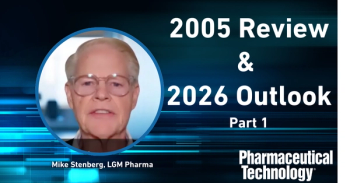
QbD and PAT: A Marriage Made in Heaven?
The basic principle behind QbD is that quality should be built into a product with an understanding of the product and process by which it is developed and manufactured along with a knowledge of the risks involved in manufacturing the product and how best to mitigate those risks.
It is rare these days to discuss the future of pharmaceutical manufacturing without using the terms quality by design (QbD) and process analytical technologies (PAT). Both of these concepts provide means for establishing an in depth understanding of a manufacturing process, which exceeds the traditional approach of process validation and testing of samples taken from the batch. So what do these terms mean?
The basic principle behind QbD is that quality should be built into a product with an understanding of the product and process by which it is developed and manufactured along with a knowledge of the risks involved in manufacturing the product and how best to mitigate those risks. QbD has been embraced by the regulatory agencies as a “best practice” for pharmaceutical product development and FDA and EMA have recently published the conclusions of their first parallel assessment of QbD elements of marketing-authorization applications (1). An important aspect of QbD is understanding and controlling the manufacturing process for the product. Defining the critical process parameters (CPPs) (e.g., air flow/temperature, rotor speed, spray rate) and then monitoring these parameters during manufacture is a standard practice in pharmaceutical manufacture.
In addition to monitoring process parameters, a relatively new trend in pharmaceutical manufacturing is the real-time measurement of critical quality attributes (CQAs) during processing, using analytical techniques generally used in a quality control (QC) laboratory, hence the term “process analytical technologies” or “PAT.” In particular, the use of spectroscopic technologies for in situ determination of material characteristics is fast becoming a standard feature in pharmaceutical processing (2). Examples include the determination of drug content uniformity during powder blending (3) and tablet manufacture (4, 5), drug-laying during pellet coating (6) and even in the processing of biopharmaceuticals (7).
PAT systems can enable continuous monitoring of product characteristics throughout processing. Consequently, the influence of changing process parameters on product characteristics can be rapidly assessed-building up an understanding of what process parameters will provide product of acceptable quality. This mapping of the relationship between process inputs and CQAs can be described as defining the “design space” for a process and is an important contributing element to QbD.
If we can define the design space and are then able to monitor the CPPs and CQAs of the product in real-time, can we abandon QC testing of product samples for confirmation of acceptable product quality? Yes, we can, in principle. Real-time release is certainly achievable and acceptable by the regulatory agencies who have issued guidelines on the subject (8, 9). The benefits real-time release are to a large extent self-evident:
- Confidence in product quality
- Significant cost saving as no final product testing required
- Reduced time from manufacture to product release
It can, therefore, be seen that adopting QbD and PAT principles for new product development makes sense not only from a regulatory compliance perspective, but also for sound financial reasons.
A marriage made in heaven? Well, QbD and PAT certainly complement each other and the likelihood is that the partnership has a very promising future.
References
1. EMA, “EMA-FDA pilot program for parallel assessment of Quality by Design applications: lessons learnt and Q&A resulting form the first parallel assessment,” EMA/430501/2013 (London, Aug. 2013).
2. T. De Beer et al., Int J Pharm 417 (1-2) 32-47 (2011).
3. C. Corredor et al., J Pharm Innov 10: 47–55 (2015).
4. K. Jarvinen et al., Eur J Pharm Sci 48: 680-688 (2013).
5. P.R. Wahl et al., Eur J Pharm Biopharm 87 (2) 271-278 (2014).
6. P. Avalle et al., Eur J Pharm Biopharm 87 (2) 244-251 (2014).
7. J. Gomes, V.R. Chopda, and A.S. Rathore, J Chem Technol Biotechnol 90 (4) 583-589 (2015).
8. EMA, “ Guideline on Real Time Release Testing,” EMA/CHMP/QWP/811210/2009-Rev1 (London, Mar. 2012).
9. FDA, Guidance for Industry: Submission of Documentation in Applications for Parametric Release of Human and Veterinary Drug Products Terminally Sterilized by Moist Heat Processes (Rockville, MD, Feb. 2010).
Robert Harris, PhD, CChem, FRSC, is chief technical officer at Juniper Pharma Services.
Newsletter
Get the essential updates shaping the future of pharma manufacturing and compliance—subscribe today to Pharmaceutical Technology and never miss a breakthrough.




